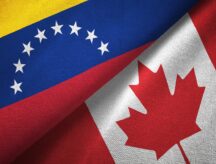Canadian immigration in 2020: Expect a big year for provincial and regional immigration programs
Millions of new Canadians will arrive through Canada’s various immigration programs during the new decade and several expected policy updates will help to pave the way in 2020.
Here’s a look at some of the notable developments that we can expect over the next 12 months both in Canada and beyond that could help shape the future of Canadian immigration policy.
2020-2022 Immigration Levels Plan announcement by March
By March, Canada’s new Minister of Immigration, Refugees and Citizenship, Marco Mendicino, should be in a position to table the 2019 Annual Report to Parliament on Immigration. The report is usually released by November 1 each year, but this was delayed because of the federal election on October 21.
This report is significant because it provides insight into the federal government’s immigration priorities. Perhaps its most notable aspect will be Canada’s 2020-2022 Immigration Levels Plan. We already know the federal government’s immigration targets for 2020 (341,000 newcomers) and 2021 (350,000 newcomers). As outlined in Minister Mendicino’s Mandate Letter, we should expect a modest increase to the 2022 target that, based on current trends, could be in the neighbourhood of 360,000 immigrants.
Parents and Grandparents Program changes expected by April at the latest
It is expected that the federal government will announce their intake process plans for the Parents and Grandparents Program (PGP) by April 2020 at the latest. While the federal government has an annual target of welcoming about 21,000 immigrants under the PGP, managing the intake process has proven challenging for many years now given demand far exceeds the supply of available immigration spots. It is likely the federal government will roll out a new process that seeks to avoid previous intake process shortcomings.
Find out if you are eligible for any Canadian immigration programs
Ottawa’s commitment to regionalization is undeniable
Under the 2019-2021 Immigration Levels Plan, Canada will look to welcome 67,800 immigrants (principal applicants, spouses, and dependents) through the Provincial Nominee Program (PNP) in the next year, which is an increase of 11 per cent compared with 2019.
Not only are provinces and territories seeking to attract more immigrants through the PNP, but they are also looking to steer more of them beyond their biggest cities. Most provinces and territories see at least 80 per cent of their immigrants settle in the largest municipalities, which comes at the expense of efforts to promote economic development in smaller cities and rural communities. To counter this, a number of provinces and territories have introduced regional PNP streams. For instance, Ontario recently selected three communities to take part in its new Regional Immigration Pilot.
The federal government is complementing the PNP with additional efforts to promote a broader distribution of immigrants across Canada (a policy known as “regionalization”).
In 2017, it launched the Atlantic Immigration Pilot, which has enabled the four Atlantic provinces of Newfoundland and Labrador, Prince Edward Island, Nova Scotia, and New Brunswick to welcome more than 4,000 more immigrants. Based on the minister’s Mandate Letter, we can expect the AIP to become a permanent program in short order.
In 2019, the federal government launched the Rural and Northern Immigration Pilot (RNIP) that will ramp up in 2020 as 11 designated communities across Canada begin to recruit newcomers through the pilot.
The minister’s mandate also entails the launch of a new Municipal Nominee Program. Details are not yet available, but it is reasonable to expect it to operate in a similar fashion to the RNIP whereby designated municipalities will be able to recruit newcomers who meet their labour market needs. The mandate also indicates the federal government will launch an additional pilot to promote more immigration to rural communities.
A noteworthy observation regarding these various programs is the federal government has now opted to provide provinces, territories, and communities across Canada with just over 50 per cent of Economic Class selection powers. This is a recent development and underscores the federal government’s commitment to ensuring the benefits of immigration are spread more equitably across the country.
Over the last few years, Economic Class selection powers have been split 50-50. Prior to the launch of the PNP in 1998, the federal government selected nearly 90 per cent of all economic class immigrants to Canada, with Quebec selecting the remaining 10 per cent.
Will citizenship fees be waived in 2020?
Eliminating citizenship fees is also part of Mendicino’s Mandate Letter. The current cost of becoming a citizen is $630 per adult, which some have argued is prohibitively high for low-income individuals and families. It is unknown when the fees will be waived, but we can expect the citizenship uptake rate to temporarily stagnate or decline as eligible immigrants make the rational decision to wait for this policy to be implemented. When it does come into effect, citizenship rates could increase by about 40 per cent by 2024.
Watch out for Great Britain and the United States
It is clear that 2020 will be yet another eventful year in Canada’s immigration system.
In addition to federal as well as PNP developments, we can expect Quebec to continue to reform its immigration programs—for instance, in late 2019, the province announced major changes to its popular Quebec Experience Program (which it then reversed) and Quebec Immigrant Investor Program.
We should also be mindful of immigration policy developments outside of Canada.
Once Britain finalizes its Brexit agreement with the European Union, its majority Conservative government may look to launch a new economic class points system that competes with Canada.
In addition, all eyes will be on the November 2020 United States presidential and congressional elections, which will certainly impact Canada in a number of ways.
Canada is looking to modernize its 2002 Safe Third Country Agreement (STCA) with the U.S. for managing asylum claims. Since 2017, some 50,000 people have used a loophole in the STCA by crossing into Canada to claim asylum through border crossings not covered by the agreement. Canada may have to wait until after the elections to pursue its modernization agenda.
Moreover, a Republican or Democratic majority across the White House, House of Representatives, and Senate could pave the way for the United States to implement reforms such as the launch of additional economic class pathways, which could also lead to more vigorous competition for Canada. President Trump has often cited Canada as an example of how he wants the United States to welcome economic class immigrants but his administration has lacked sufficient congressional support to make Canada-like reforms.
All this to say, immigration policy is always international in nature, and issues beyond Canada’s control including south of the border and across the Atlantic Ocean will impact Canada beyond 2020.
Find out if you are eligible for any Canadian immigration programs
© 2019 CIC News All Rights Reserved
- Do you need Canadian immigration assistance? Contact the Contact Cohen Immigration Law firm by completing our form
- Send us your feedback or your non-legal assistance questions by emailing us at media@canadavisa.com






